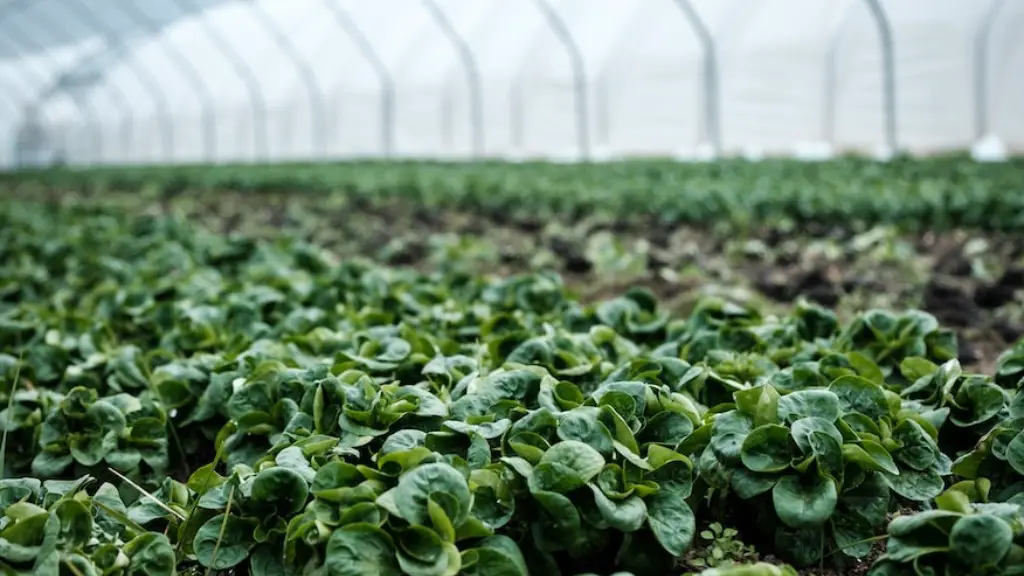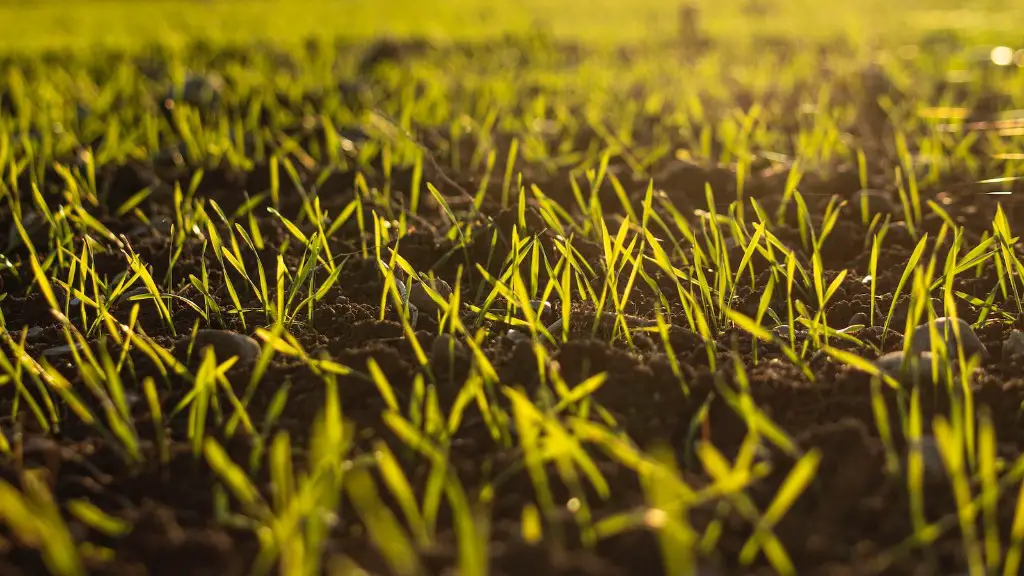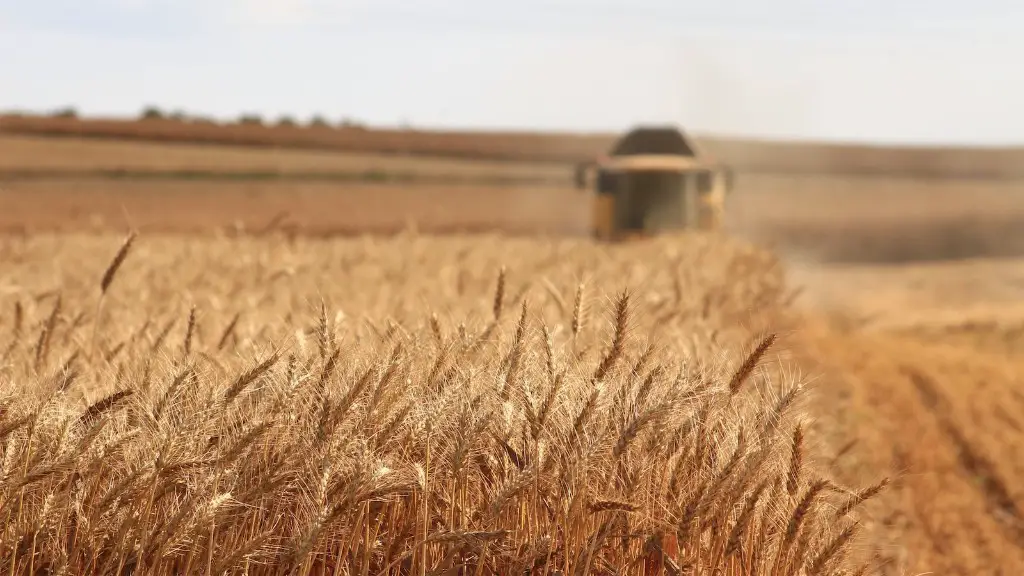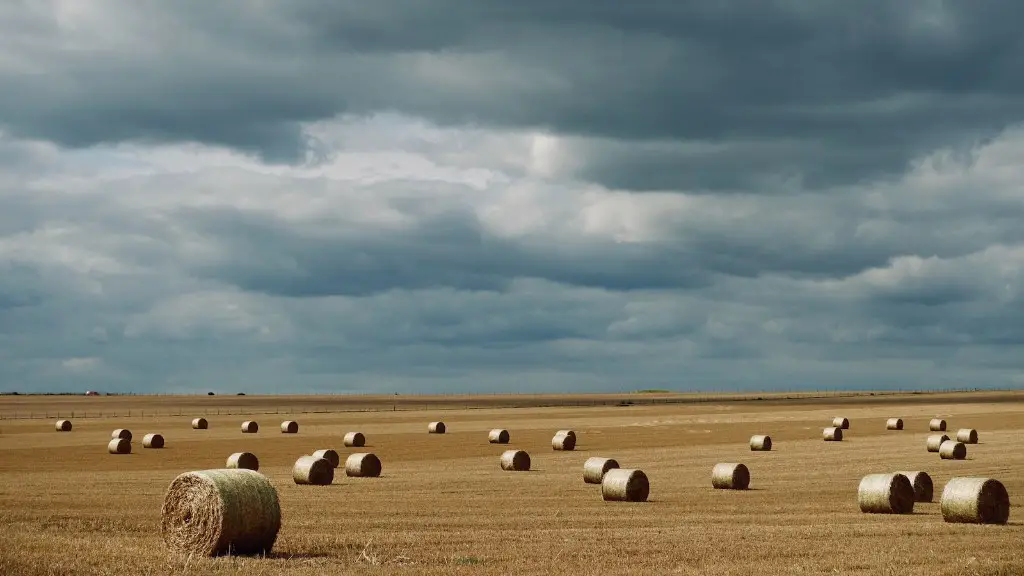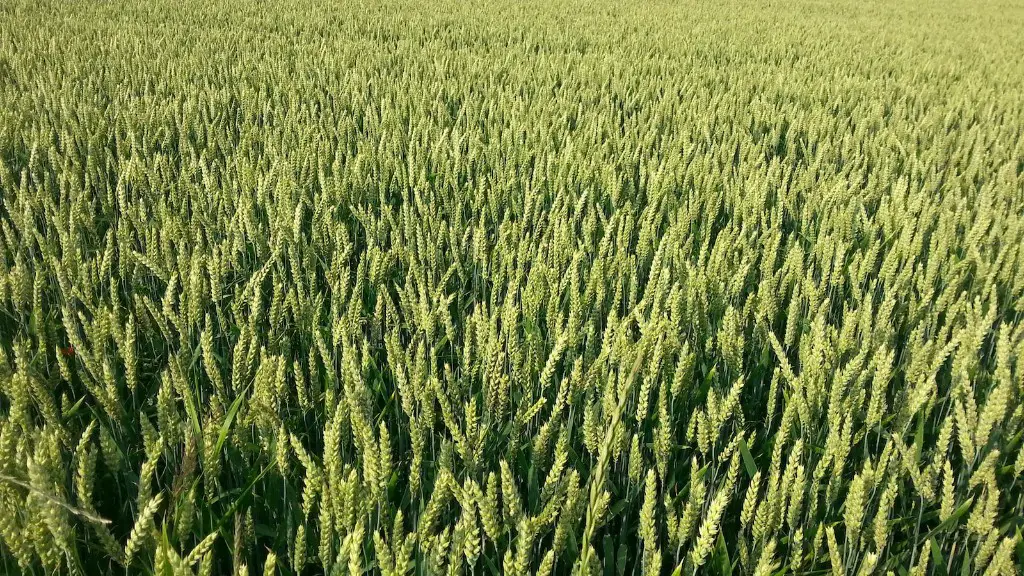Bunds are a constantly evolving technology in the world of agriculture. They are an innovative way of soil conservation, water management, and plant protection that provide growers with flexibility and advantages over traditional systems. Bunds are purposely built earthen embankments that span horizontally and have a gradient from the highest point in the land. They provide additional support to the soil, preventing erosion and limiting water runoff. They are also used for pond and tank storage, water diversion, and intensifying fertilizer application.
Bunds are constructed mainly in hilly or mountainous land which has significant erosion potential. Since they are built horizontally, they can span a large acreage and reduce overall land use, allowing the landowners to maximize their acreage and land use without impacting their soil. In addition to this, they can hold in 35% more water wen compared to traditional methods, making them a more efficient choice in drought-prone areas.
Bunds are also beneficial for protecting plants from water-borne diseases such as root rot. They can protect against sediment runoff and prevent soil particles from washing off and carrying diseases with them. By protecting the root system of plants, bunds also improve overall yields and production. As the bunds prevent the loss of nutrients, crops grown in bunded land have been found to have higher yield and more advantageous fertility.
Bunds are relatively easy and cost effective to build, making them popular among farmers in both developed and developing countries. Furthermore, they are easily maintained and increase soil fertility by improving the natural filtration and infiltration features in soils. This ensures better quality in the surrounding fields and fewer potential issues down the road.
In conclusion, bunds are a versatile and innovative technology in the field of agriculture, offering growers increased control and flexibility in their operations. They reduce water runoff and soil erosion while providing additional support to the crops. Furthermore, bunds can improve the fertility of soils and provide protection against waterborne diseases, making them a popular choice among farmers.
Bunds and Nutrient Retention
A key benefit of bunds is their ability to improve the soil fertility due to their capability of retaining nutrients from the runoff water from the terraces and the surrounding land. Erosion control measures such as terraces and bunds have been found to have an average level of 62% nutrient retention, which is higher than the traditional surface runoff method. This is due to the reduced soil loss caused by the terraces and bunds, combined with the sediment filtering capabilities of these structures.
Bunds also improve soil fertility by reducing the amount of water percolating through the soil. This can be especially helpful in areas where there is a high level of soluble nutrients, as bunds will help to keep these soluble nutrients in the topsoil and reduce their transport to other parts of the landscape. This helps to reduce the nutrient loss and ultimately improve crop production.
Bunds are able to hold in more water when compared to traditional methods, as they are purposely built such that the water runs off and is collected in the basin. This helps to reduce losses from evaporation, resulting in increased water availability and improved crop production. They can also reduce the need for frequent irrigation, as the water that is stored in the bunds can be used during the dry periods.
In addition, bunds can also help to reduce potential leaching of harmful contaminants, as they prevent the soil particles from washing off. This can improve the water quality surrounding fields, which is beneficial for both the environment and the health of the surrounding people.
Overall, bunds offer a great way of retaining nutrients and improving the fertility of soils. They are able to reduce water runoff and soil erosion, while also trapping water and preventing the washing away of nutrient-rich soil particles. This provides growers with more control and flexibility in their operations, while also helping to reduce the need for frequent watering and leaching of harmful compounds.
Bunds and Weed Control Solutions
Bunds can be used as part of an integrated weed control strategy in order to keep weeds in check. The bunds should be designed in such a way that the water runoff accumulates in the center and does not flow outside the field. This will ensure that any weeds that are growing in the runoff water will be confined to the basin where they can easily be controlled.
The use of bunds has been found to be effective in controlling weeds such as annual ryegrass and lucerne. By trapping the water within the basin, the weeds will compete for light, moisture, and nutrients, resulting in lower germination rates. Furthermore, the soils that are affected by the water accumulation will be compacted, making it harder for the weeds to germinate.
Bunds can also be used in combination with other weed management strategies such as using herbicides, covers, or mulches. By combining these different approaches, the growth of the weeds can be significantly minimized. This helps to reduce the need for frequently monitoring the weed population, which can reduce labor costs and time spent in weed control.
In addition, bunds can also be used to reduce the spread of invasive weeds. By trapping the water and preventing it from leaving the field, the seeds of invasive weeds will be contained within the basin and will not be able to spread to other areas. This helps to protect the surrounding farmland and maintain the overall health of the land.
Overall, bunds provide an effective solution for weed control. By trapping the runoff water, the weeds can be contained within the basin, limiting their growth and spread. This allows growers to maintain a high level of control over their weed population, while also reducing the amount of labor and time spent in weed control.
Bunds and Insect Control
Bunds can be used as part of an insect control regime in order to limit the infestation of insects in the field. By trapping the water in the basin and preventing it from escaping, the larvae of the insects will be contained and unable to escape to other areas. This allows growers to maintain a high level of control over their insect population and reduce the amount of insecticide they rely on.
The use of bunds has also been found to be effective against certain types of insects. By trapping the water and preventing the soil particles from washing away, the insects will be unable to find the right environment to thrive, making it harder for them to infest the field. This has been found to be effective against pests such as the lucerne flea and the fire ant.
In addition, bunds can also be used to reduce the risk of insect infestations from other nearby fields. The water accumulation within the bund creates a wet boundary, which can act as a barrier against the spread of insects. This can be especially helpful in areas where there is not much land for insect migrations.
Overall, bunds offer an effective way of controlling insect infestations. By trapping the water and preventing the soil particles from washing away, the insects will be unable to find suitable conditions to infest the area. This provides growers with more control and flexibility in their efforts in insect control, while also reducing their reliance on insecticides.
Bunds and Plant Protection
Bunds can also be used to improve overall plant protection. By trapping the water in the basin and preventing the soil particles from washing away, the plants are offered additional support and stability. This helps to reduce the risk of soil erosion, which can be especially helpful in fields with steep slopes or in areas with heavy rainfall.
The use of bunds has also been found to be effective in protecting plants against waterborne diseases. By trapping the water and preventing its escape, the diseases are confined to the basin and unable to spread to other areas. This helps to keep the plants in the field healthy and increases overall production.
In addition, bunds can also be used to reduce the risk of pests and other types of damage in areas with high humidity and temperatures. By trapping the water and preventing it from evaporating, the humidity levels can be maintained and kept at an optimal level, which can help to keep the pests away.
Overall, bunds provide a great way of protecting plants from waterborne diseases and other types of damage. By trapping the water and creating a wet boundary, plants can be offered additional support and stability, while also preventing the escape of diseases and pests. This helps to increase the overall yield and production, while also improving the environmental conditions of the field.
Bunds and Fertilizer Application
Bunds can be used to intensify the application of fertilizers and other types of soil amendments. By trapping the water in the basin and creating a wet boundary, the nutrients in the soil amendment can be enhanced and concentrated, allowing for greater efficacy in a shorter amount of time.
This can be especially beneficial in areas where the soil is nutrient-deficient. By concentrating the nutrients within the bund, the fertility of the soil can be improved and more yields can be expected from the crops.
In addition, bunds can also be used to reduce the risk of fertilizer run-off. By trapping the water and preventing it from leaving the field, the nutrients in the fertilizer will be retained in the basin and unable to flow to other areas, helping to reduce the risk of nutrient pollution.
Overall, bunds offer an efficient way of applying fertilizers and other types soil amendments. By trapping the water and intensifying the application of the soil amendments, growers can enjoy increased yields while also reducing their risk of nutrient pollution.

